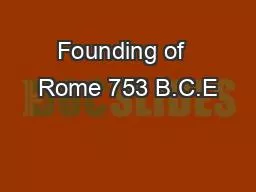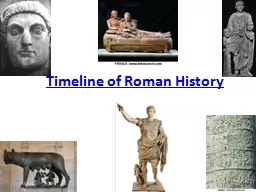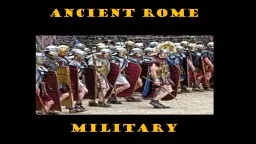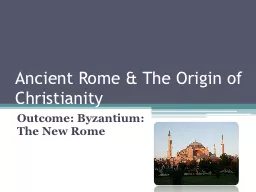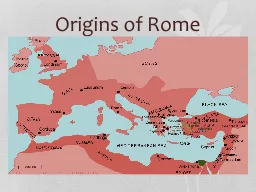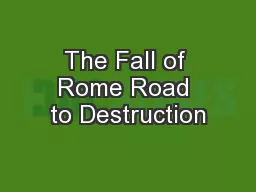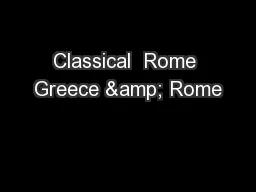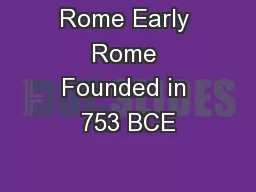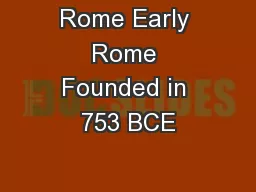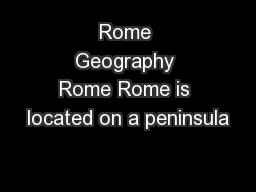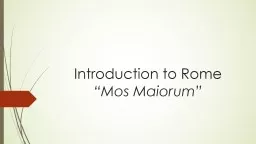PPT-Founding of Rome 753 B.C.E
Author : windbey | Published Date : 2020-07-04
Romulus and Remus Twin brothers who founded Rome Legend of Birth of Rome Livy historian wrote about the site of the city in his work The Early History of Rome Not
Presentation Embed Code
Download Presentation
Download Presentation The PPT/PDF document "Founding of Rome 753 B.C.E" is the property of its rightful owner. Permission is granted to download and print the materials on this website for personal, non-commercial use only, and to display it on your personal computer provided you do not modify the materials and that you retain all copyright notices contained in the materials. By downloading content from our website, you accept the terms of this agreement.
Founding of Rome 753 B.C.E: Transcript
Download Rules Of Document
"Founding of Rome 753 B.C.E"The content belongs to its owner. You may download and print it for personal use, without modification, and keep all copyright notices. By downloading, you agree to these terms.
Related Documents

